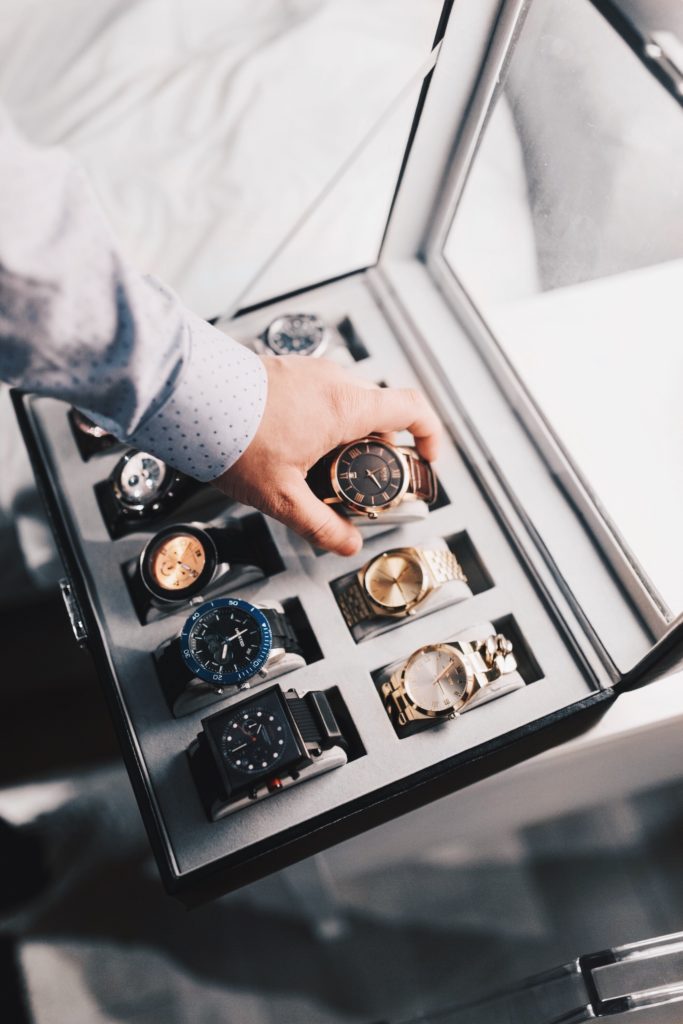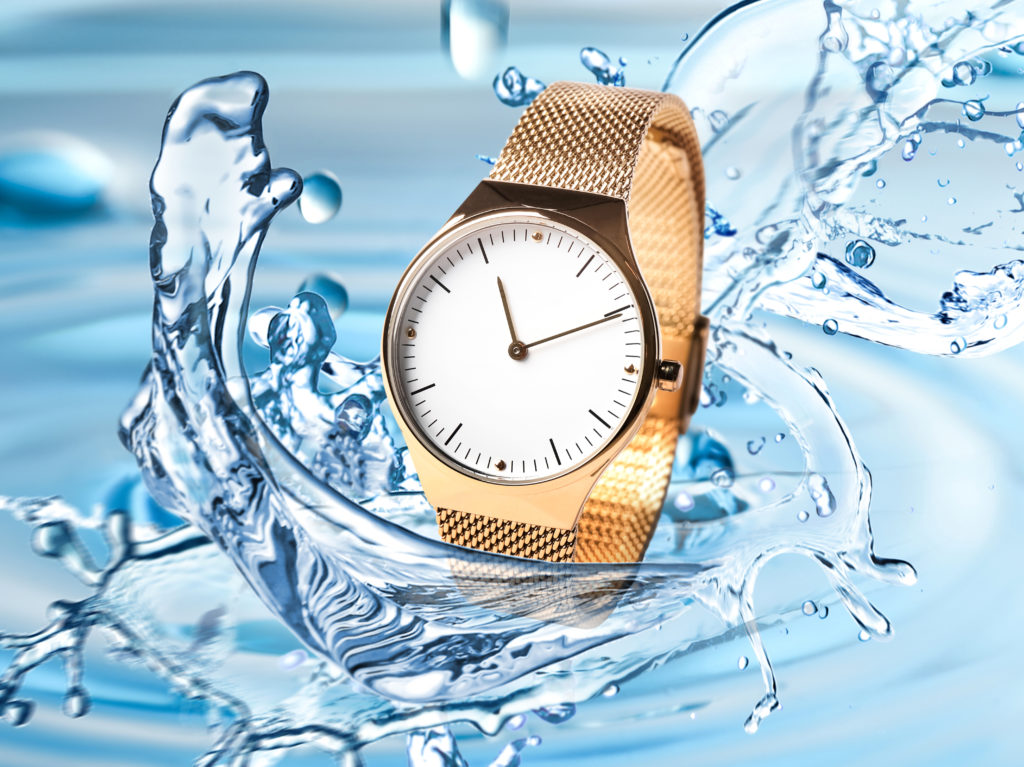Prefer to listen to us read this article? Click below!
There are times in life when you just get caught in the rain. Literally. You also should never cry over spilled milk. Unless of course, that spilled milk just ruined your new watch. Either way, accidents happen. So when it comes to your computer, phone, or in this case, your watch, it’s usually a good idea to know if it’s waterproof or not.
No watch is truly waterproof. However, Rolex is the only company that can use the term ‘waterproof’ in their advertising because of their patented design on the Oyster model and demonstrated it to be the most resistant to water. Other watches can be considered water-resistant.
But which watches are and how deep can they be submersed.
The Rolex Submarine and Oyster
During the twentieth century, Hans Wilsdorf, a worker for a watch company, saw the need for watches that could stand the test of time, dirt, and water. At that time, the pocket watch was very popular, but had to be protected by staying underneath one’s clothing or in a pocket, hence the name ‘pocket watch’.
This is when he thought of the idea of creating a wristwatch that was easier to use, harder to lose, and could handle the elements. he gave his idea and the need for it to a firm that would later become the Manufacture des Montres Rolex S.A.
The Submarine was invented in 1922. It was made watertight by using two outer cases that were screwed down tightly. This could be considered similar to putting your phone inside a tightly sealed bag, preventing water and dust from entering and harming your device.
In 1926, with a few added adjustments, the Oyster was created. The new design kept the watch even more secure and watertight. Hans Wilsdorf chose the name Oyster because, “like an oyster, it can remain an unlimited time underwater without detriment to its parts”.
One year later, Hans decided to put the Oyster to the true test. A swimmer, Mercedes Gleitze, was about to be the first British woman to swim 21 miles across the English Channel. Hans asked Mercedes to wear the Oyster watch on the swim. After her swim, it was reported that the watch still worked correctly, making the watch and Rolex famous.
Water Resistant: What Does it Mean and What Makes it So?
Even though no watch is truly waterproof, that does not mean most watches can’t handle rain, hand washing, or a sweaty workout. Water-resistant watches can endure some penetration of water and still operate properly. Many watch companies these days are designing and marketing their watches as water-resistant. Each watch brand and design is different, so don’t be afraid to take your time and ask an expert questions throughout your search for a high-quality watch that won’t let you down.
There are a few different parts of the watch and its design that can make it more or less water-resistant. First, the case back, or how it is attached to the watch, makes all the difference. Snap-on case backs are considered the least water-resistant, while backs attached with screws provide a tighter and more secure seal, making them more resistant to water and less likely to come off accidentally. Screw-in case backs act as a double casing for the watch, which is the most water-resistant design.
The crown of the watch, or the knob you turn to set the time, is a surprisingly crucial part of the watch’s design. The crown is the easiest place for water to enter. The screw-down crown is where the knob’s threading matches the threading tube inside the watch case, acting like a water bottle lid that’s been screwed shut. Looking for a watch with a screw-down crown is one of the best ways to ensure resistance to water.
The watch gasket, also known as the “O” ring, is a circular material placed inside the watch to seal up the watch’s joints and nooks to keep water out. It is important to replace the gasket regularly as it will wear out over time and become less effective. Every watch owner should also have their watch’s water resistance checked yearly by a professional, as they can catch any preventable issues that could ruin your watch over time.
Water Resistance Measurements
Water-resistance watches are tested in labs and rated by the depth they may be able to be immersed in water. It is important to understand that the depth rating of a watch does not necessarily mean it can handle that exact measurement of immersion. The testing and rating of watches is flawed because they can’t accurately determine what will happen in real-life situations with water, and the age of a watch can affect its ability to protect itself against the elements. The rating system is simply an idea of how much water the watch can handle. Each rating is a general idea of some activities the watch can be put through while still working correctly.
- 0-30m/99ft: Don’t allow any contact with water or natural elements
- 30m/99ft-50m/165ft: Can handle hand washing, rain, very little contact with water
- 50m/165ft-100m/330ft: Hand washing, rain, light poolside swimming, light contact with water
- 100m/330ft-200m/660ft: Hand washing, rain, swimming, lukewarm showering, scuba diving, regular contact with water
- 200m/660ft-500m/1650ft: Hand washing, rain, lukewarm showering, scuba diving, heavy contact with water
- 500m/1650ft+: All activities up to deep water diving, very heavy contact with water
Caring for Your Watch
Watches can be pretty pricey, so whether yours is water-resistant or not, you should take the necessary steps to prolong the life of this timeless accessory. Throughout the ownership of your watch, keep it clean. Water is not the only thing that can obstruct it, so don’t let dust, dirt, or sweat ruin it over time.
Next, even if your watch is water-resistant, try not to wear it during water-contact activities where it’s not necessary to be wearing it. Even the “most resistant” watches can be affected by a quick shower, so giving your watch more dry time is the safest way to go. Make sure you are winding and adjusting your watch time correctly. Winding it backward, or winding it too much can confuse the clock and could cause it to break.
Lastly, have your watch looked at by a professional regularly. Your watch and its parts have a lifespan, so having a quick check-up can catch any possible issues that could cause it to break later on. If you care for your watch, it will always do its job!







